Fire on the Mountain: The Appalachian Culture
Welcome to the Appalachian way of life.
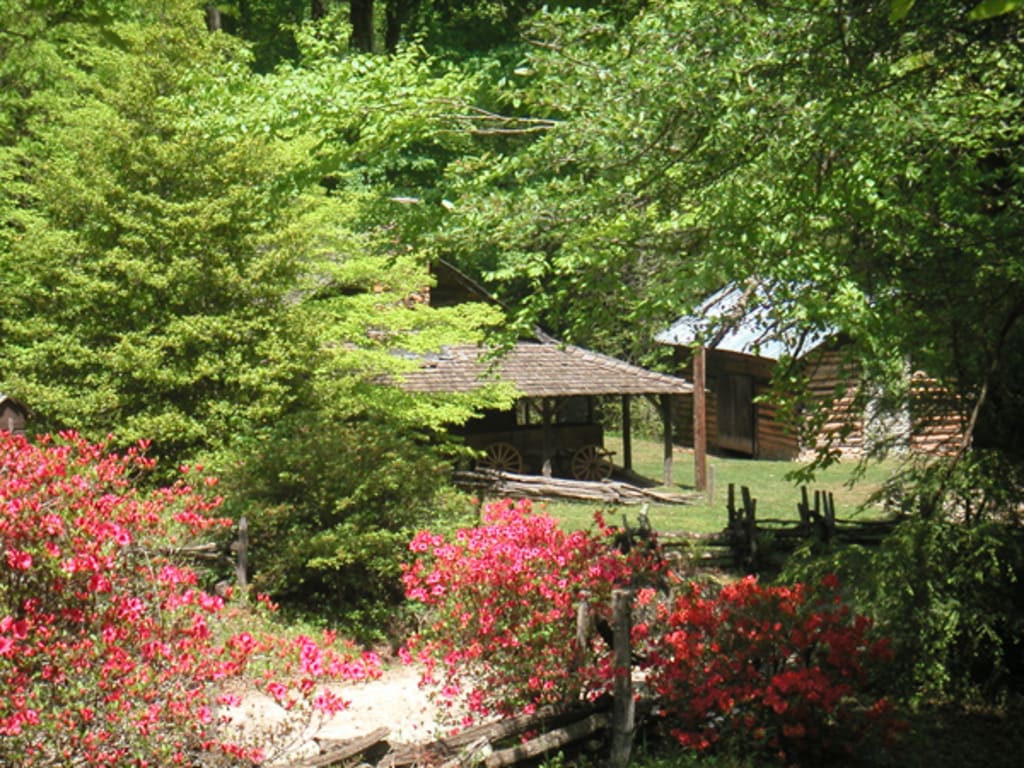
By 1966 in the mountains of North Georgia, much of the old folk knowledge was disappearing. The culture of Appalachia was being replaced with fast food and discount stores. This was a culture of oral tradition rather than the written word. The older people of the region had pursued a way of life learned from their parents and not too changed in over a century. Young people had discovered Wal-Mart and McDonald. The times had changed and there was no longer a need for weavers, blacksmiths, carters and ham curers.
To help preserve the mountain heritage, the high school students of Rabun County started on a project to collect and save knowledge of the old ways. The students visited the oldest citizens and interviewed them. Lots of these people were illiterate but they had a broad base of survival knowledge and crafts passed down from their parents who had in turn learned it from their parents. The students began producing Foxfire Magazine preserving all of this knowledge as a part of their curriculum.
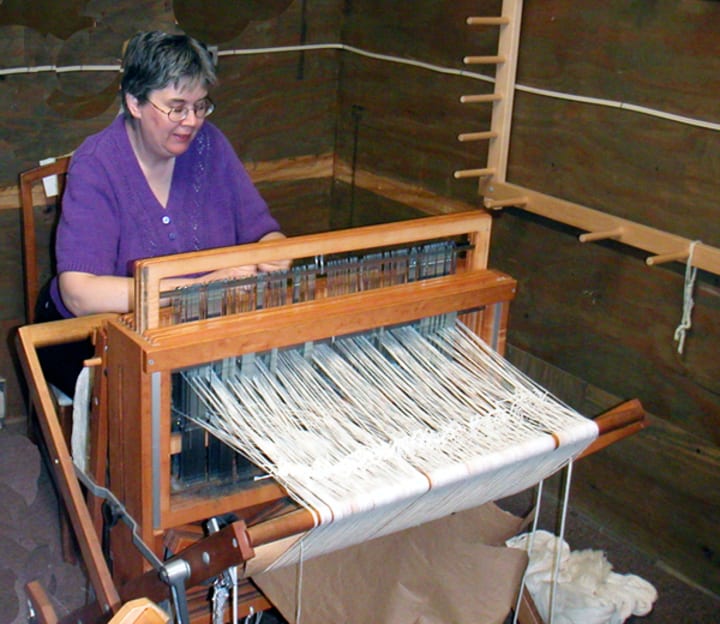
A docent demonstrates weaving as done in Appalachia
The magazine became such a success that it is still produced today. In 1972, the articles were complied into the first of the Foxfire Books. The older people who enjoyed passing their knowledge to an appreciative younger generation began to give the students old items. Things no longer necessary for survival like corn shuckers, cider presses, dye vats, gradually found their way into the children’s keeping. The revenue from the books and magazines allowed them to purchase 110 acres and begin preserving these artifacts. They now had a place to preserve the unique Appalachian lifestyle. Today, The Foxfire Project has shown Appalachian culture to the world with monthly magazines and twelve Foxfire Books. But nothing else can bring it to life like a stroll back in time at the Foxfire center.
The museum is located on the slopes of Black Rock Mountain along with the Foxfire Center. The artifacts are now distributed around the center buildings where they are shown in a setting similar to their original uses.
Foxfire Center will return you to a more peaceful era as you roam this realist early mountain village. The twenty-plus buildings date from the early 1800s. Most are open and you can catch of glimpse of a time when the village blacksmith and the miller were the most important citizens of a rural community.
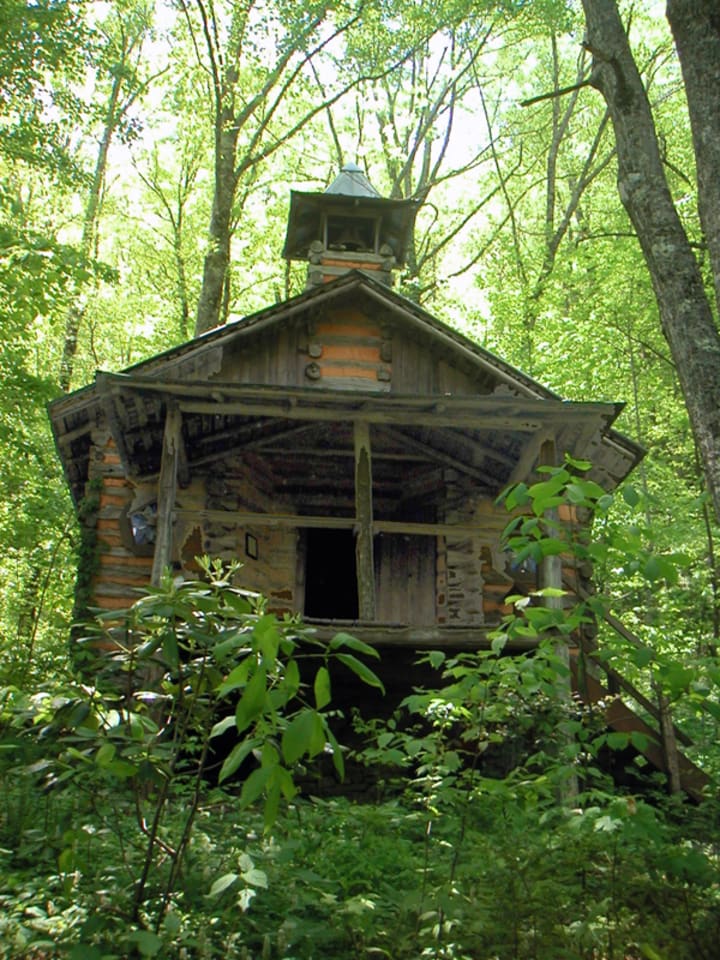
Chapel at Foxfire
The chapel, rough wood set among towering pines with its small belfry, reminds you that these people were concerned with their souls as well as their bodily well being. When you enter the dark interior of this tiny log chapel, you will encounter a sense of peace not found in the world’s largest and finest cathedrals.
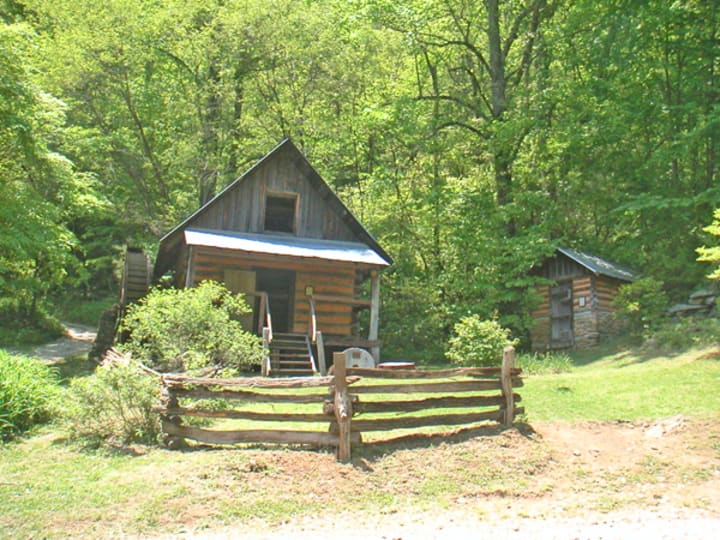
The mill house at Foxfire
The mill house is complete with its water wheel and grinding wheels. In front you will see one of the grinding stones use to crush the corn and other grains and produce a healthful flour with no chemical additives. Perhaps the food they ate accounts for the fact that many of the mountain people lived active lives into their nineties and many even passed their century mark.
Naturally, the hard work needed to carve a life out of the rugged Georgia Mountains produced a hardy strain. All around the Foxfire Center you will see proof of the difficult life these people faced. A hog slaughtering area with its huge boiling vat and hand operated pulleys needed to provide them with pork throughout the year; plowing and farming implements; spinning wheels, looms, heavy cast iron pots and utilitarian fire places all attest to the labor necessary to survive.
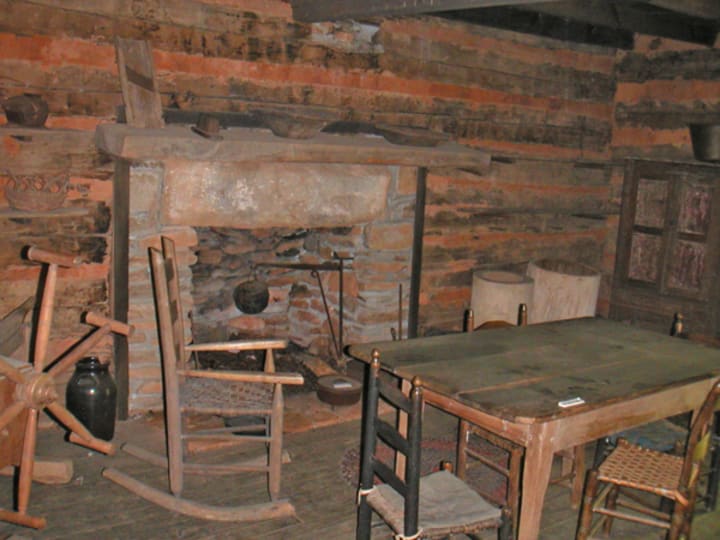
Life was simple in Appalachia
Step into a simple one-room cabin that was home to three generations with ten children. When you run your hand over the simple but beautiful furniture, realize it was all carved by hand from the abundant trees of the mountain forests. The beds were simple rope beds that housed mattresses made of ticking filled with straw. The ropes had to be tightened regularly with an instrument used for just that purpose. These beds are the source of the expression “sleep tight” since the beds were more comfortable when the ropes were stretched tightly. The rest of the expression, “ Don’t let the bugs bite,” came about because if the mattress hay was not carefully cleaned bugs would make their home inside.
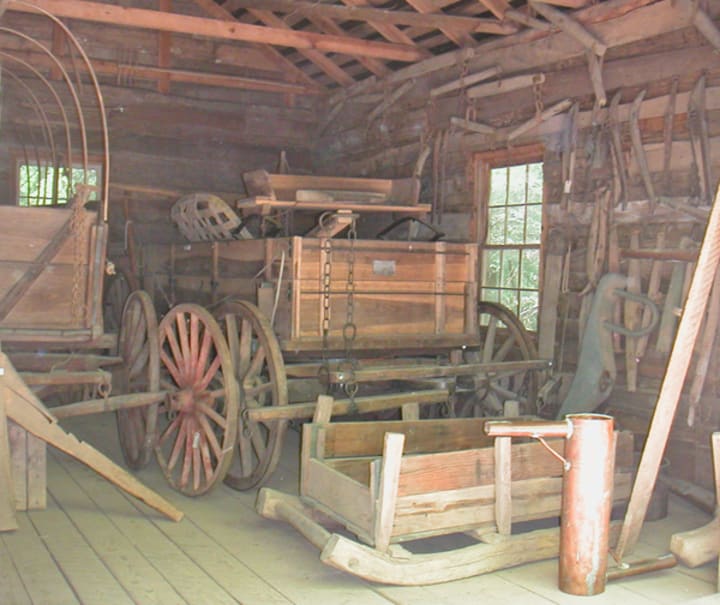
Zuraw Wagon
One special item you need to view is the Zuraw Wagon, a late-1700s freight wagon known as a “tar grinder” because a tar-like substance was used to lubricate its hubs. The wagon was probably of Pennsylvania origin rather than Southern Appalachian but it is not its age or rarity that makes it interesting. The Zuraw Wagon is the only know wagon in existence that was used to transport the Cherokee people on the Trail of Tears.
The wagon originally belonged to Green Daves from North Carolina. He contracted with the army to help move the Cherokee and used the wagon probably to transport supplies and elderly or sick people on the Trail of Tears. It remained in the family until Green’s grandson passed it on to a cousin, Retta Pickelsimer Zuraw, who donated it to the Foxfire Museum in 1975.
About half of the cabins are authentic buildings, moved and reassembled on this site. The others are reconstructions made mainly from bits and pieces of old buildings that were too deteriorated to use. As you wander among these preserved treasures, bear in mind that Foxfire was and still is a project of the students.
In 2016, Foxfire celebrates the 50th anniversary. Most of the time, there is some special heritage demonstration going on but for this special year there are many special events added. Some of these are the Foxfire Folk-Life Celebration to be held on May 7, 2016. Folk on the Mountain Festival in May and June 2016. Folk on the Mountain Festival on July 1-2, 2016. A new play for Foxfire anniversary has been written by Philip DePoy and will be performed by students. In October, there will be a Foxfire Student Reunion of all the students who took part in the program. These and many other activities will be held at The Foxfire Museum & Heritage Center to celebrate the anniversary
How fitting that a culture that passed its wisdom down from the old to the young is being passed on to the world by the young recipients of this mountain culture. How exciting to be able to step back in time and visit the past.
About the Creator
Kathleen Walls
I am travel writer and author who loves visiting unusual places and doing fun stuff from food to festivals.
Enjoyed the story? Support the Creator.
Subscribe for free to receive all their stories in your feed. You could also pledge your support or give them a one-off tip, letting them know you appreciate their work.


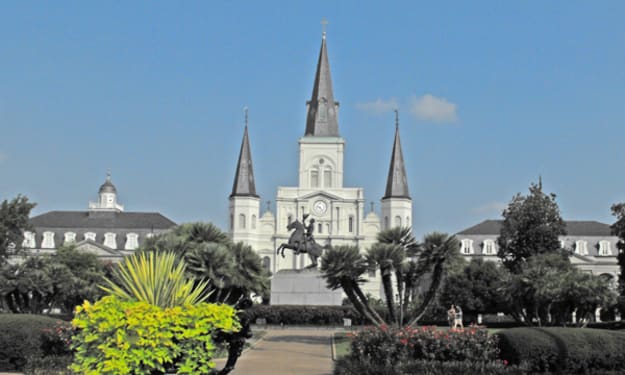



Comments
There are no comments for this story
Be the first to respond and start the conversation.